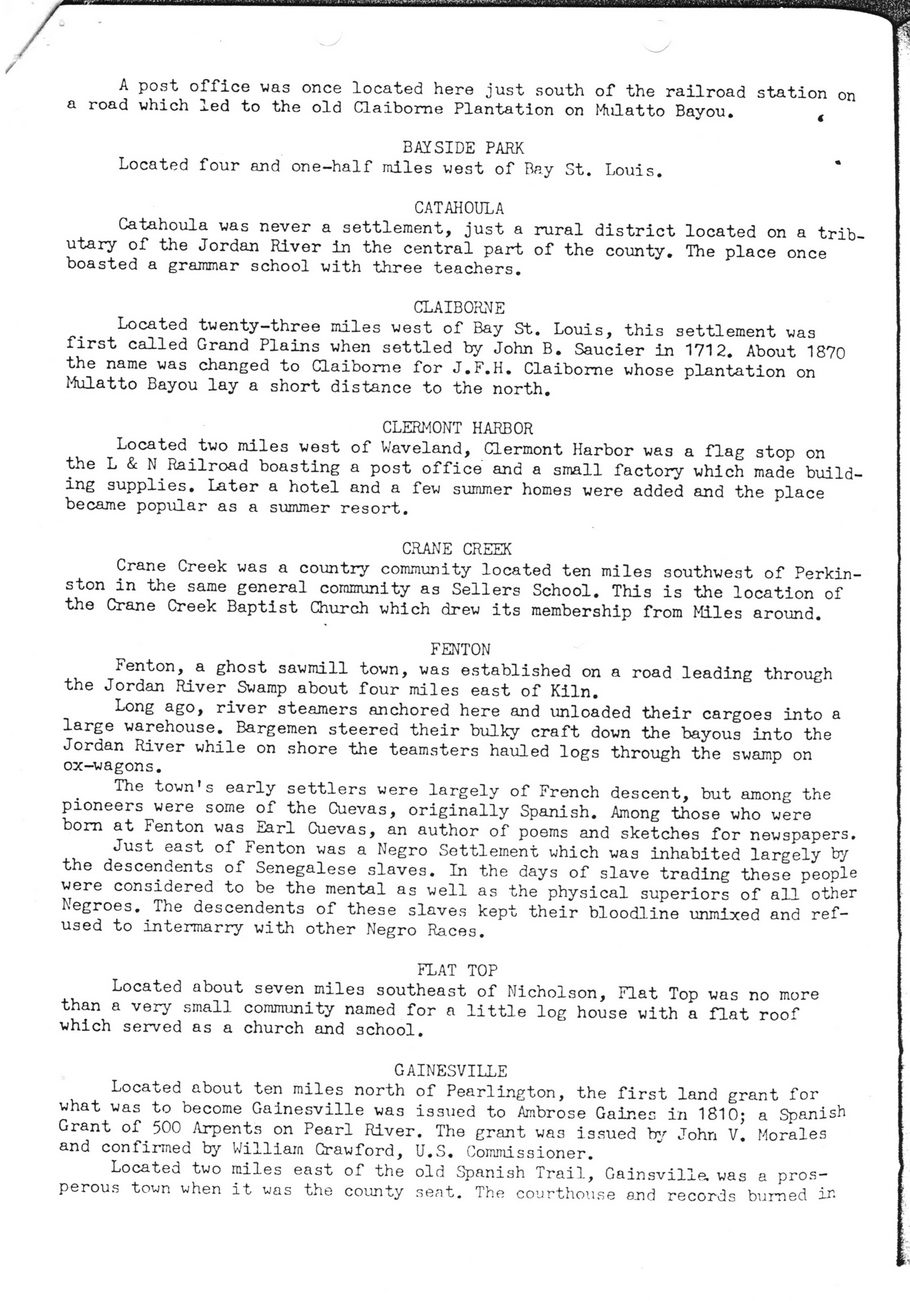This text was obtained via automated optical character recognition.
It has not been edited and may therefore contain several errors.
A post office was once located here just south of the railroad station on a road which led to the old Claiborne Plantation on Mulatto Bayou. t BAYSIDE PARK Located four and one-half miles west of Bay St. Louis. CATAHOULA Catahoula was never a settlement, just a rural district located on a tributary of the Jordan River in the central part of the county. The place once boasted a grammar school with three teachers. CLAIBORNE Located twenty-three miles west of Bay St. Louis, this settlement was first called Grand Plains when settled by John B. Saucier in 1712. About 1870 the name was changed to Claiborne for J.F.H. Claiborne whose plantation on Mulatto Bayou lay a short distance to the north. CLERMONT HARBOR Located two miles west of Waveland, Clermont Harbor was a flag stop on the L & N Railroad boasting a post office and a small factory which made building supplies. Later a hotel and a few summer homes were added and the place became popular as a summer resort. CRANE CREEK Crane Creek was a country community located ten miles southwest of Perkin- ston in the same general community as Sellers School. This is the location of the Crane Creek Baptist Church which drew its membership from Miles around. FENTON Fenton, a ghost sawmill town, was established on a road leading through the Jordan River Swamp about four miles east of Kiln. Long ago, river steamers anchored here and unloaded their cargoes into a large warehouse. Bargemen steered their bulky craft down the bayous into the Jordan River while on shore the teamsters hauled logs through the swamp on ox-wagons. The town's early settlers were largely of French descent, but among the pioneers were some of the Cuevas, originally Spanish. Among those who were bom at Fenton was Earl Cuevas, an author of poems and sketches for newspapers. Just east of Fenton was a Negro Settlement which was inhabited largely by the descendents of Senegalese slaves. In the days of slave trading these people were considered to be the mental as well as the physical superiors of all other Negroes. The descendents of these slaves kept their bloodline unmixed and refused to intermarry with other Negro Races. FLAT TOP Located about seven miles southeast of Nicholson, Flat Top was no more than a very small community named for a little log house with a flat roof which served as a church and school. GAINESVILLE Located about ten miles north of Pearlington, the first land grant for what was to become Gainesville was issued to Ambrose Gaines in 1810; a Spanish Grant of 500 Arpents on Pearl River. The grant was issued by John V. Morales and confirmed by William Crawford, U.S. Commissioner. Located two miles east of the old Spanish Trail, Gainsville. was a prosperous town when it was the county sent. The courthouse and records burned i*1

Hancock County History General History-of-Hancock-County-(09)